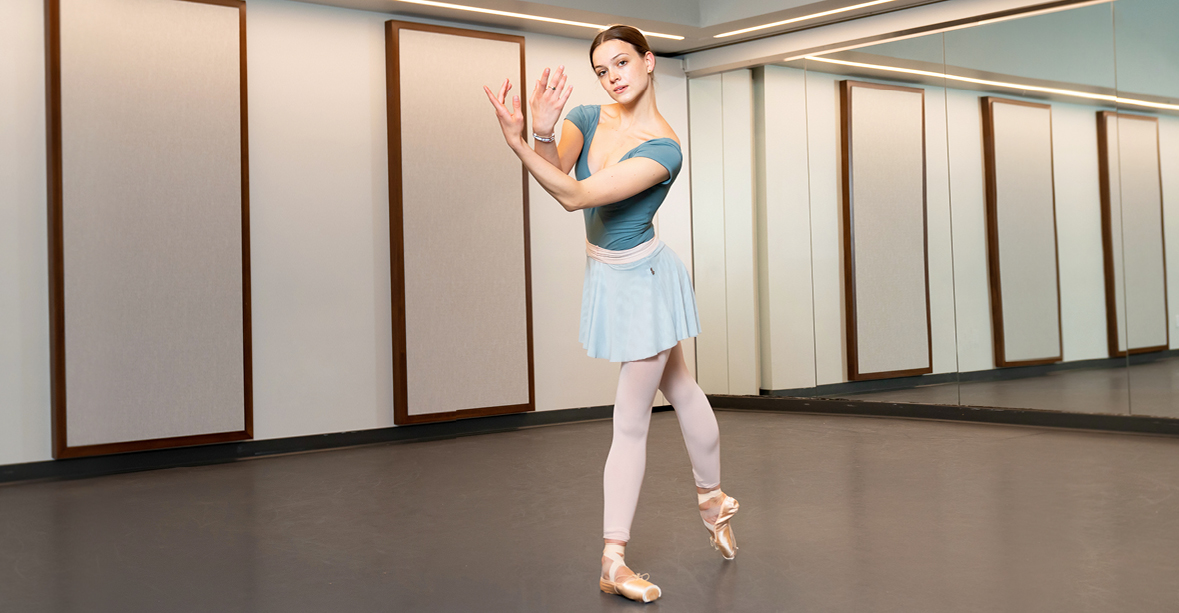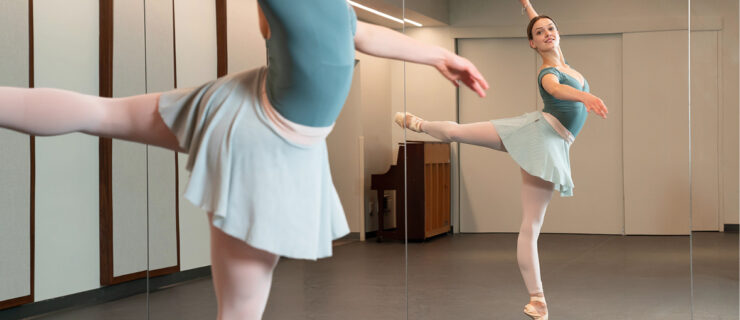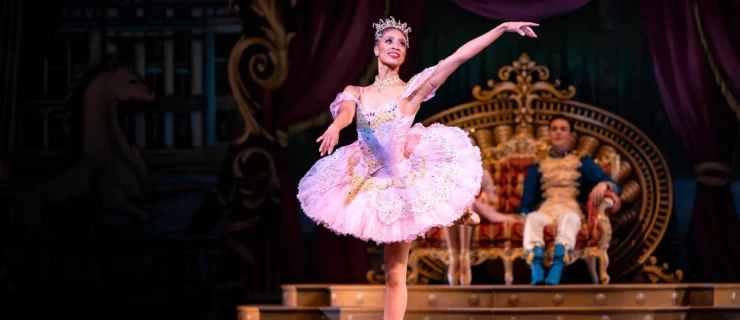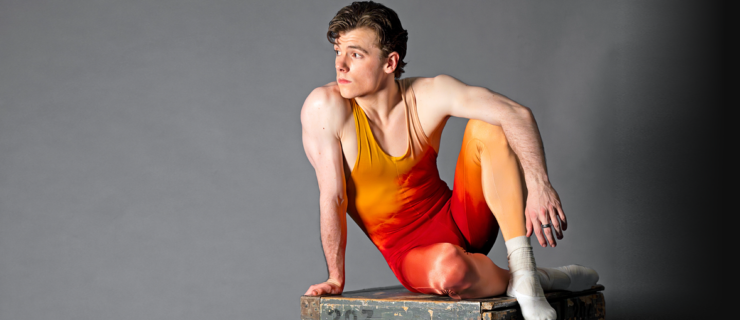How Stuttgart Ballet’s Mackenzie Brown Found an Artistic Home Abroad
In October 2023, Mackenzie Brown was preparing to make her debut as Juliet in John Cranko’s Romeo and Juliet at Stuttgart Ballet. A soloist at the time, it was one of her first major principal roles. “It’s such an important ballet for this company,” says the American-born Brown. But a last-minute partner switch due to injury introduced a nerve-racking complication: Brown had only two days to rehearse with principal Martí Paixà, and no time for a stage run-through.
She tried to keep an open mind, but even Paixà—who believes a role like Romeo needs to be played differently with each partner—admits he was unsure how he’d manage to develop a unique onstage connection with Brown in such a limited time. “But Mackenzie gave me so much,” Paixà says. “It was like we’d danced it forever.”
For Brown, the lack of preparation time helped her deliver a raw, authentic performance. As she entered the ballroom scene and took in her surroundings, for example, “I was admiring all of my colleagues onstage,” she says. “It was the first time I was seeing it all. I felt like I could really live that ballet.”
Her grace under pressure and ability to fully inhabit her character didn’t go unnoticed, as Stuttgart’s artistic director Tamas Detrich promoted the then 21-year-old Brown to principal after her performance. “The pureness and freshness of how she danced—everything was there,” he says.
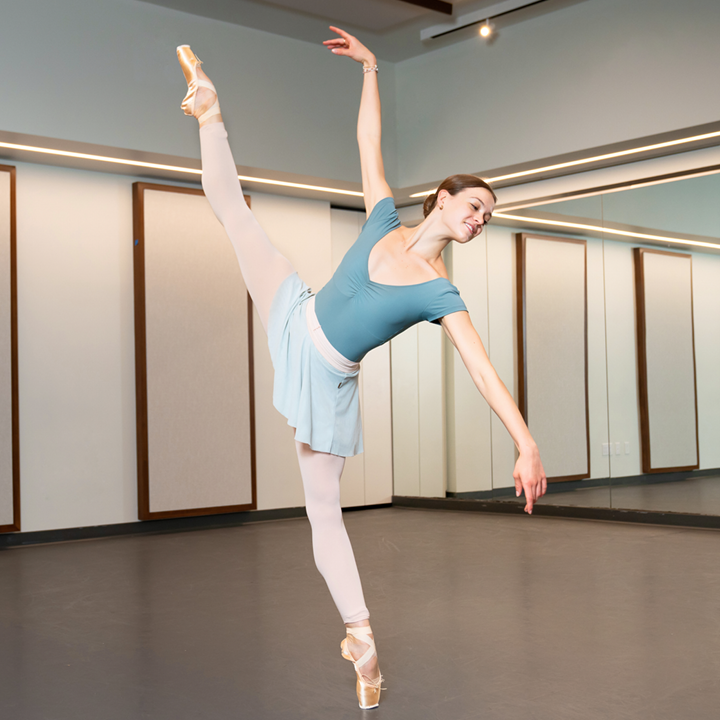
Brown’s journey to principal dancer has been meteoric. After joining Stuttgart Ballet’s corps in 2020, she was promoted to demi-soloist after only one season, rising again to soloist in 2022. The secret to her success? “She’s a chameleon,” says Luca Masala, artistic director of the Princess Grace Academy, where Brown trained from 2016 to 2020. “She’s like a white page that immediately [assumes] the color of the choreographer.” Yet Brown is also a dancer of deep character. “She’s the kindest person I’ve ever met,” Masala continues. “That’s why she can touch people with her art.”
Detrich agrees. “Even if she’s on the bullet train, her feet are on the ground and her head is on her shoulders.”

Pursuing a Gift
Talking to Brown, her modesty and grounded-ness are self-evident. She’s quick to credit her success to her family and teachers and, as a devout Christian, links her achievements back to God. “He really gave me a gift and love for dance,” she says. “I just want to share that with others.”
This passion took time to develop, however. Growing up in Stafford, Virginia, Brown explored various hobbies, from soccer to gymnastics to figure skating, alongside training in jazz, tap, hip hop, lyrical, and contemporary at a local competition studio. It wasn’t until her mom heard that having solid classical technique could improve other dance skills that Brown began taking ballet “on the side” at the Classical Ballet of Fredericksburg.
Splitting her time between the two studios, Brown initially found classical training “a bit boring.” She didn’t aspire to become a professional, either. “My childhood dream was to grow up, get married, and be a mom,” she says. But ballet slowly grew on her. “There’s always this sense of striving for perfection,” Brown says, explaining how this complements her deep work ethic.
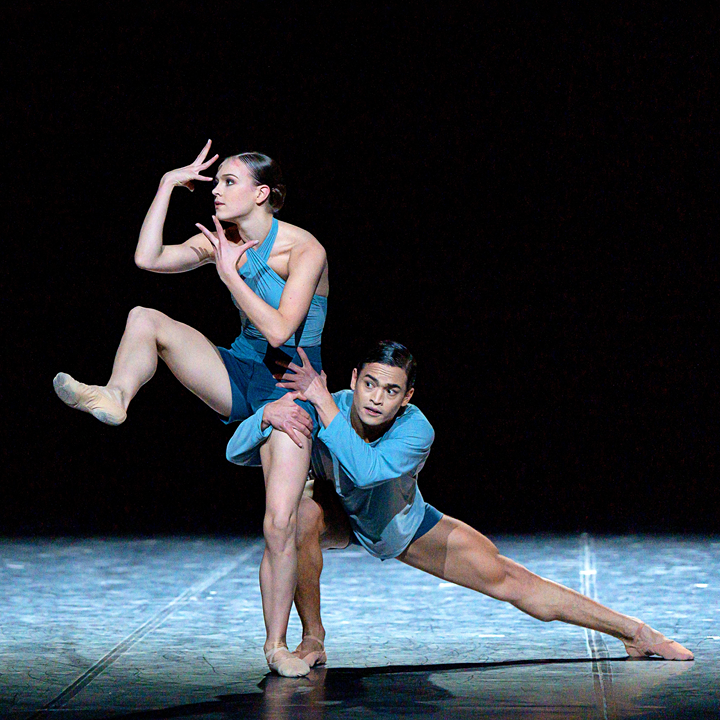
At age 14, Brown competed at the Youth America Grand Prix Finals and won a scholarship to Monaco’s Princess Grace Academy. It was then that she started to consider dance as a career option. “My mom said that God had opened this door for me, and that I should take the opportunity and see how it goes.” After visiting the school for a week with her dad—who asked a lot of questions about safety and education—Brown decided to go for it.
At first, moving so far from home wasn’t tough for Brown. Again, her mom encouraged her. “She said not to think about missing out on other things and to just be present,” Brown says. “But as I got older, I started having more difficulty missing my family.” To help her through her homesickness, she spoke extensively about her worries with the school’s director, Luca Masala, who himself had moved far from home, to train at School of American Ballet.
Determination to Dance
When Brown was 16, Masala selected her to represent Princess Grace Academy at the 2019 Prix de Lausanne. Yet her experience was far from smooth sailing. She had broken her tibia a few months earlier and went through extensive cryotherapy before being given the all-clear to take part. Once in Lausanne, Brown developed a toe infection. The competition’s doctor gave her antibiotics and cleaned it. When he assured her that it would be safe, albeit painful, to dance on, Brown chose to keep performing.
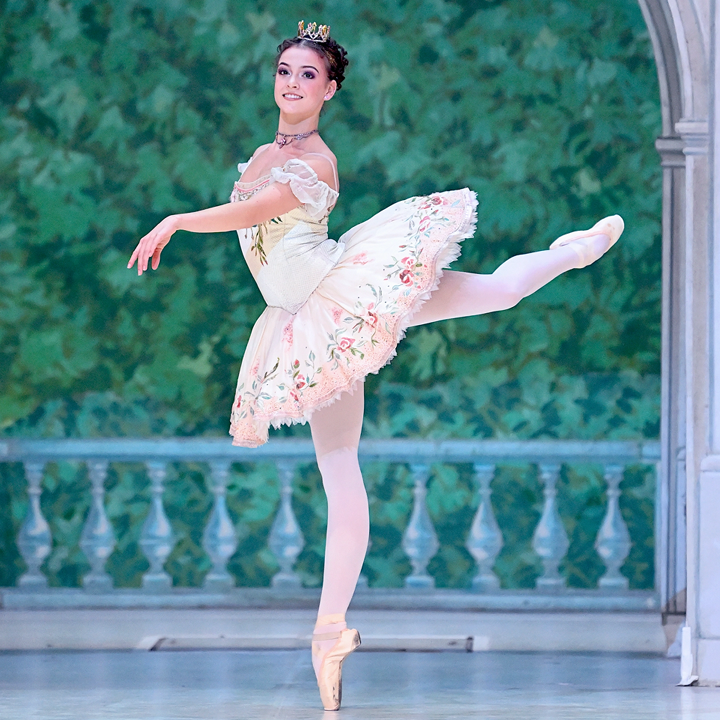
She won the Prix’s top prize, and while circumstances weren’t ideal, Brown is grateful for the experience. “It really taught me how to find the balance between pushing myself when I know my body can take it, and understanding when things are serious and I need to rest,” she says. She also learned that there’s more to preparation than long hours in the studio: “Sometimes we prepare too much physically, whereas we should be preparing more mentally.”
Spreading Her Wings
Brown spent the next year of training considering where she wanted to dance professionally. “I knew I wanted to stay in Europe,” she says, alluding to the fact that theaters are mainly state-funded and include benefits, such as longer contracts and access to pension plans.
After taking class with several companies, Brown accepted an offer at Stuttgart Ballet, in part due to its friendly atmosphere. “I really wanted to be in a place where I could thrive, dance, and enjoy the social aspects of being a dancer,” she says. The company’s diverse repertoire, which includes works by former director John Cranko, was another draw. “His choreography really allows dancers to find themselves in the role,” says Brown.
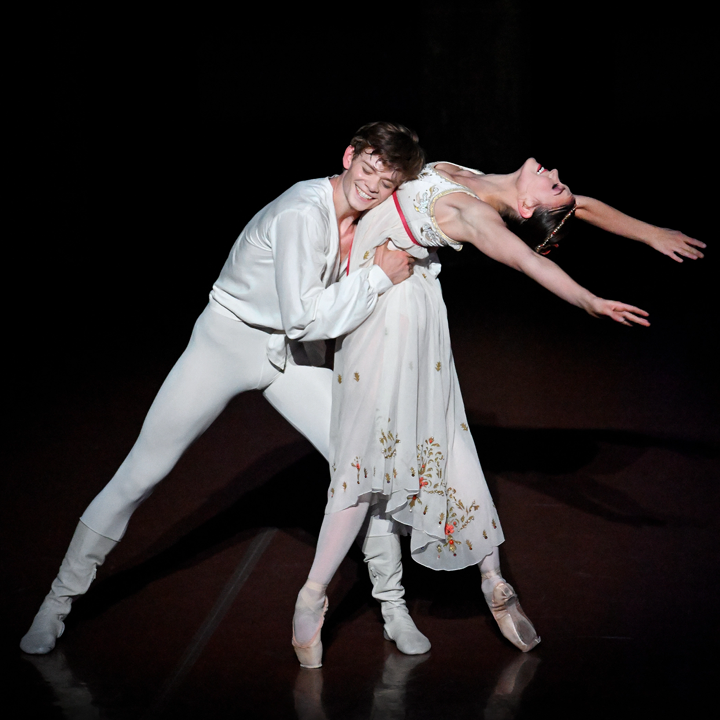
But before her 2020 graduation from Princess Grace, the COVID-19 pandemic forced her to return to the U.S. and train remotely from her parents’ garage. “Mentally it was such a struggle,” she says. The pandemic further complicated her start at Stuttgart Ballet that fall. “I didn’t even meet the full company for a few months because we were doing class in small groups,” she says. Eventually she settled in. “I was so welcomed,” she says, describing the dancers’ camaraderie. “Working together with people can produce great things. It fuels us as human beings. That’s beautiful to me.”
From Dancer to Artist
Brown’s love of working with others has been helpful as she’s risen through the ranks at Stuttgart. Her first solo role, as Olga in Onegin (a favorite ballet), helped her gain more partnering experience, which she’s continued to build upon. “She always gives 100 percent onstage,” says Paixà, reminiscing about a contemporary duet by Roman Novitzky they performed together recently. “She was guiding me for the first time instead of me guiding her,” he adds.
Contemporary works come naturally to Brown due to her background in jazz and other styles. She still loves the classics, though. “Now, I can see the freedom you can have in classical ballet,” says Brown. While upbeat characters suit her bubbly personality, she’s enjoyed tackling deeper roles, too, from Juliet to Aurora in Marcia Haydée’s Sleeping Beauty, which at times requires the dancer to embody longing and vulnerability.
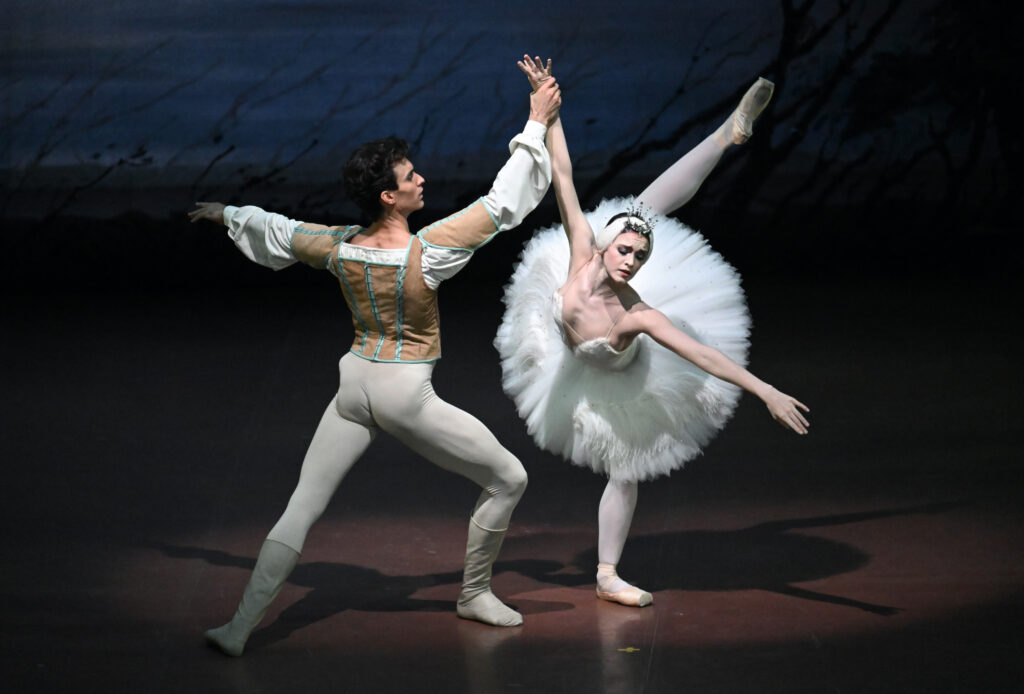
Swan Lake’s Odette/Odile, which Brown debuted in May, has been one of her latest challenges. “It’s such a big ballet,” says Brown. “After my first run-through in the studio, I was dead. But you can learn how to save yourself in certain moments, then push yourself and play with things.” The role allowed Detrich to see her in a different light. “I didn’t know how technically strong she was until then,” he says.
Brown says she sometimes struggles with balancing the physical and mental load that comes with being a principal dancer: “You’re never off, you’re always thinking and preparing.” She doesn’t struggle with nerves, though, despite the high-stakes roles she’s now dancing. “I feel very at home onstage,” she says. “Something that helps me is to remind myself that I’m human. I’m going to make mistakes and don’t want to let perfectionism ruin the moment.”
Looking Ahead
Outside of company life, Brown enjoys drawing, writing, cooking, and baking. “I’m very much a homemaker,” she says. She’s also studying for an education degree online at Virginia-based Liberty University, which will qualify her to teach from kindergarten through to sixth grade in the U.S. “I was so blessed to have so many teachers pour into me that I just want to give that back to other people, whether that’s through dance or at a normal school.”
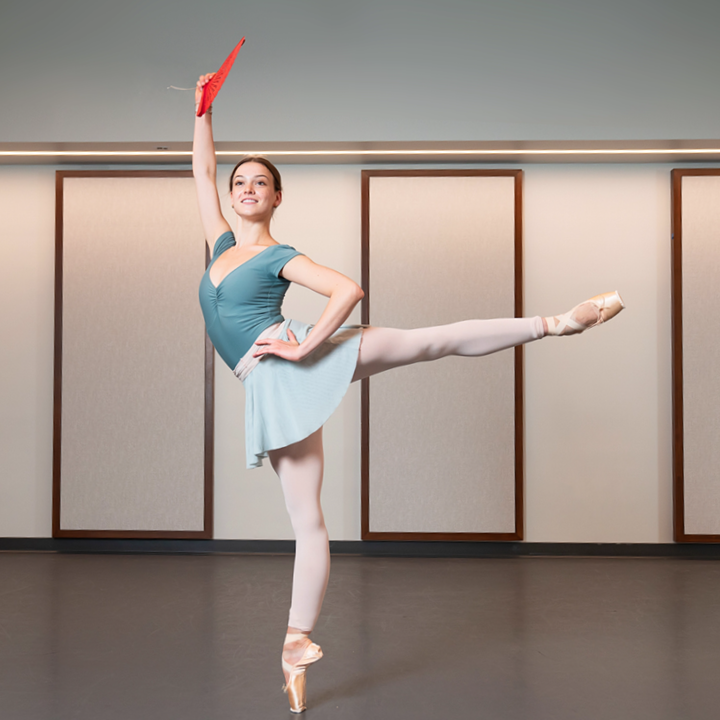
For now, at least, Brown is focused on ballet, and dreams of one day dancing the lead in Giselle and Tatiana in Onegin. “I really just hold my career with open hands. Whatever God has in store, I’m open to that,” she says.
“There is so much more in the future for Mackenzie,” says Detrich. Whatever she takes on, he adds, “she will stay herself: a humble, beautiful artist and person. For me, that’s very important, the person inside the artist. When that comes out, that’s everything.”
